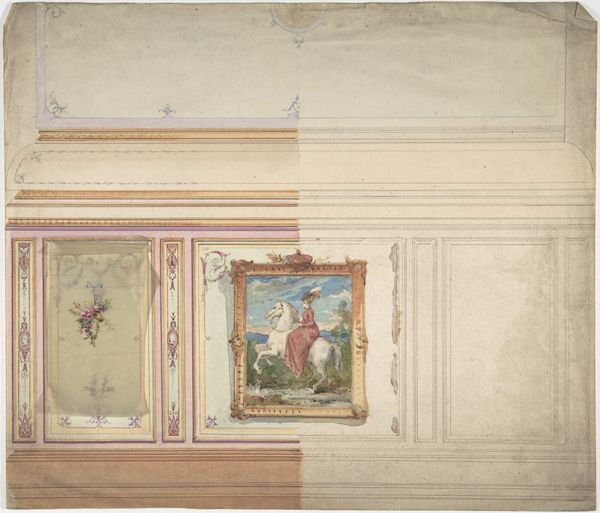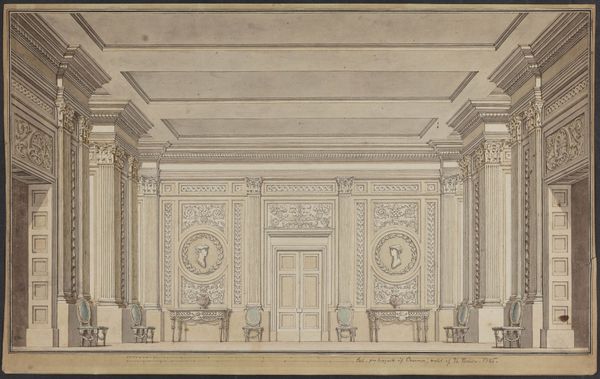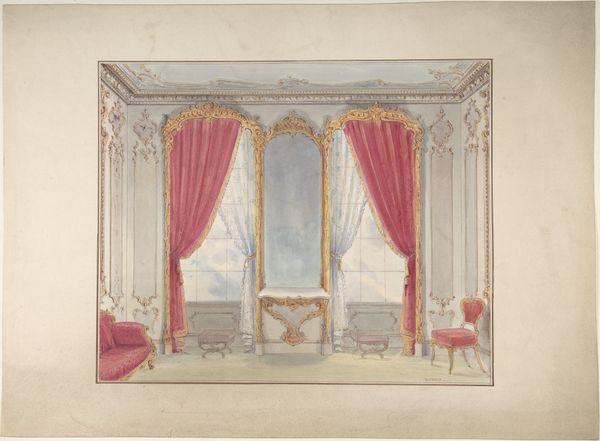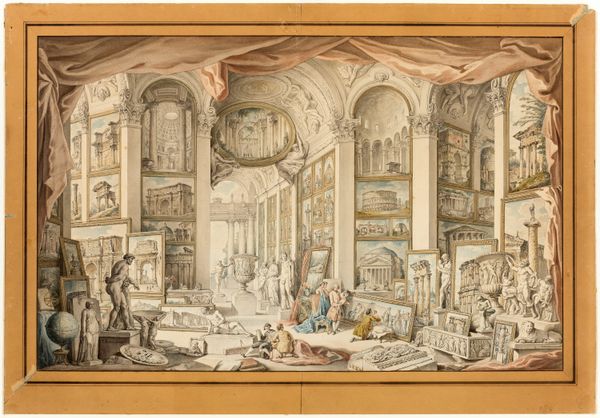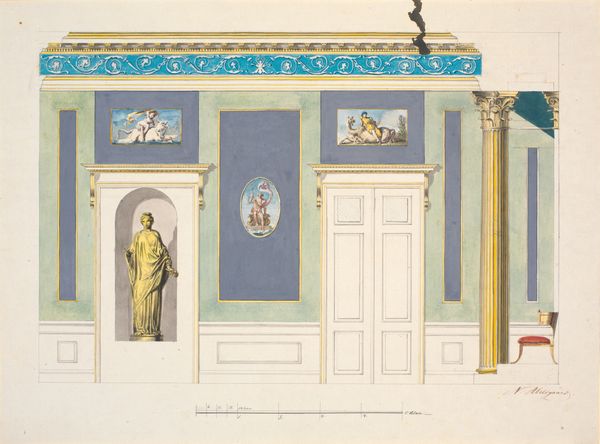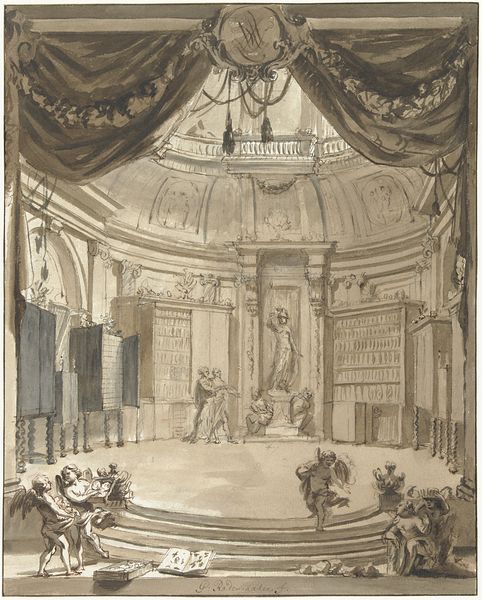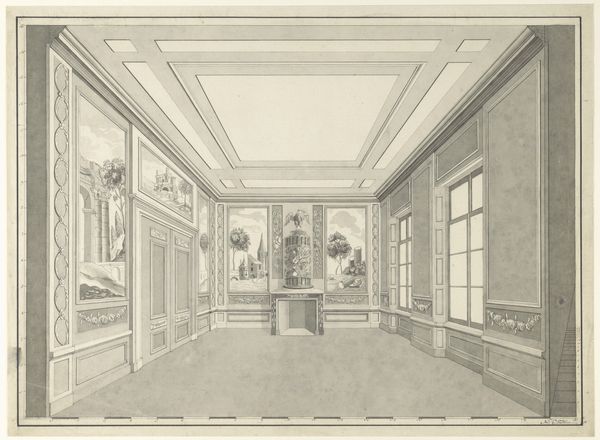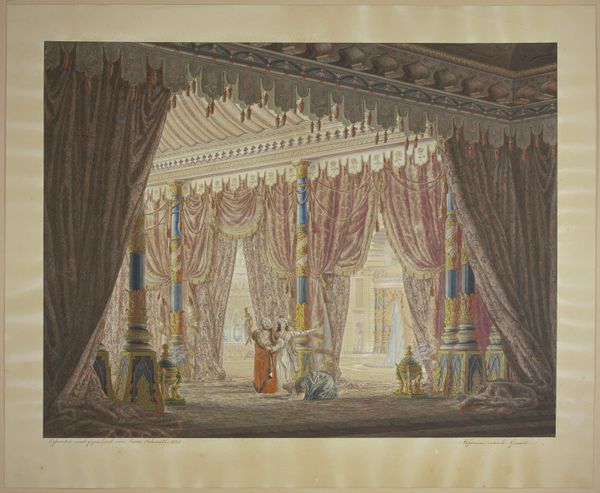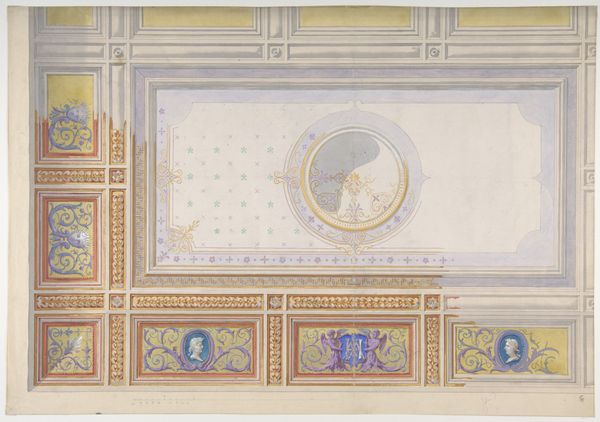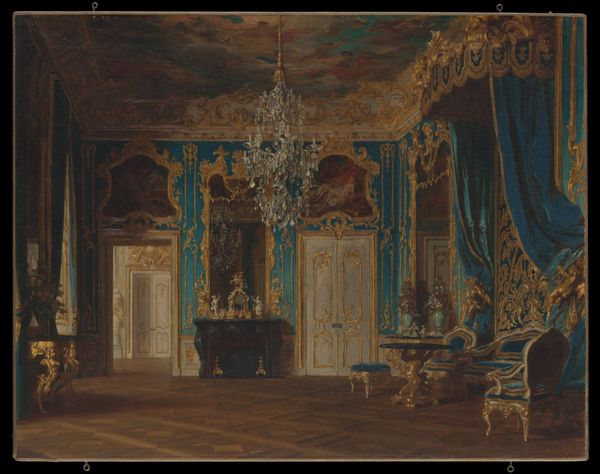
painting, fresco, watercolor
#
portrait
#
neoclacissism
#
water colours
#
painting
#
landscape
#
fresco
#
watercolor
Dimensions: 81.5 × 95.8 cm (32 × 37 3/4 in.)
Copyright: Public Domain
Editor: So, here we have Antoine Pierre Mongin's "L'Hiver (Winter)," made around the early 19th century. It appears to be a watercolor, depicting an interior scene in cool tones. The figures are so elegantly placed, and it gives off this feeling of classical restraint. How do you see the making of this piece impacting its message? Curator: Interesting observation. Beyond the mere depiction, let’s consider the "how." The watercolor medium itself speaks volumes. It’s interesting how the delicate nature of watercolor juxtaposes the grand Neoclassical interior; consider what it meant to use watercolor at the time this was produced. Was it a sketch or a final study for, say, fresco paintings? Perhaps it was conceived and bought as a bourgeois good? What happens if we interpret Mongin's choice not only aesthetically but economically? Editor: That’s a great point. I hadn't thought about watercolor as a marker of a different kind of production. It challenges the idea of monumental "high" art, doesn't it? Did that change how art was circulated and who had access to it? Curator: Precisely. Think about the labour involved. Watercolors demanded specific skills and offered quicker output than large-scale frescoes. What does the social and economic role of the artist now look like? It shifts from grand commissions for the elite to…something else. Do you think its subject--winter--relates to his process at all? Perhaps as a seasonal practice or offering more "portable" representations? Editor: Hmm, that connection with winter could speak to that idea of seasonality and how art production might adapt based on access and resources. Thinking about it as an economic artifact as well as an artistic one is pretty enlightening. Curator: Exactly! Considering art in its full social and material life allows us to read beyond surface appearances. What can we do next? Editor: Absolutely! This approach opens up a completely new perspective.
Comments
No comments
Be the first to comment and join the conversation on the ultimate creative platform.
